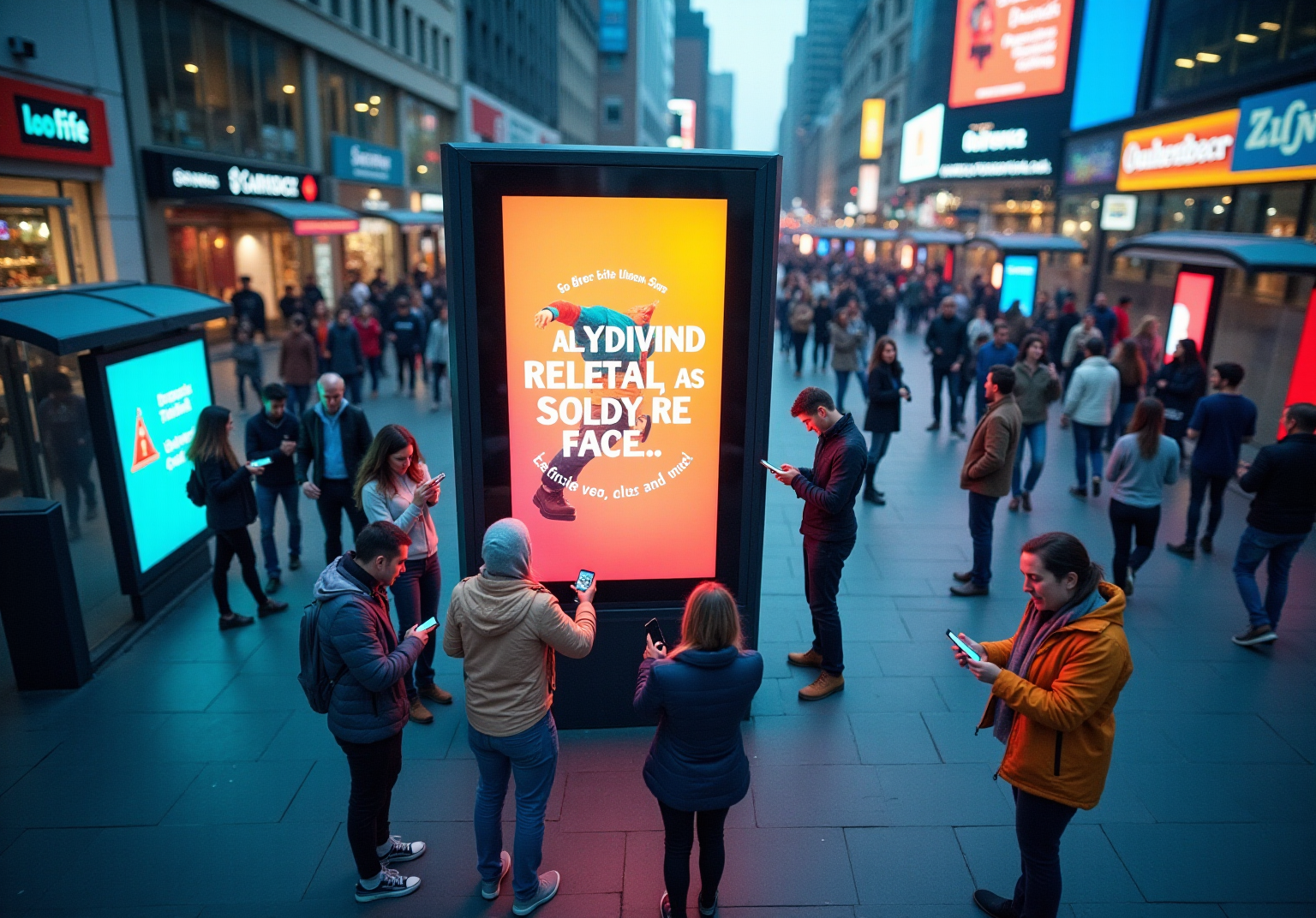
Overview
The article presents authoritative strategies for repetition ads designed to enhance brand recall. It underscores the significance of data-driven approaches, emotional triggers, and consistent messaging across various channels. By examining successful implementations from industry giants like Coca-Cola and Nike, the article illustrates how these strategies not only strengthen consumer engagement but also significantly boost sales. Companies that harness these methods can expect to see tangible benefits in their marketing efforts.
Introduction
The landscape of advertising is rapidly evolving; however, one principle remains steadfast: repetition is key to brand recall. As brands strive to stand out in a saturated market, effective repetition ads can serve as a secret weapon that not only boosts visibility but also strengthens consumer loyalty. This article explores ten powerful strategies that can transform repetition advertising from a mundane tactic into a dynamic force that captivates audiences.
How can brands strike the perfect balance between frequency and engagement, ensuring their messages resonate without overwhelming consumers? The answers lie within these innovative approaches, promising to elevate brand recall to new heights.
Parah Group: Optimize Repetition Advertising with Data-Driven CRO Strategies
Parah Group employs data-driven CRO strategies that significantly enhance the effectiveness of repetition ad promotions. By meticulously analyzing user behavior and engagement metrics, they pinpoint the optimal frequency and messaging that resonate with target audiences. This strategic approach not only maximizes product recall but also ensures that advertising expenditures, particularly for repetition ad campaigns, are utilized efficiently, resulting in improved conversion rates and average order values (AOV).
For example, a $30M apparel company experienced a remarkable 35% increase in conversion rates and a 10% rise in revenue per visitor after implementing Parah Group's strategies, which included optimizing product pricing and gamifying the shopping experience. In a similar vein, Grab Green, a $15M cleaning product company, achieved an impressive 80% increase in AOV by testing free shipping thresholds and introducing product bundles.
Their methodologies, encompassing A/B testing and user session recordings, facilitate continuous fine-tuning of ad performance through the implementation of repetition ads, thereby solidifying Parah Group's status as a leader in the CRO domain for DTC brands.
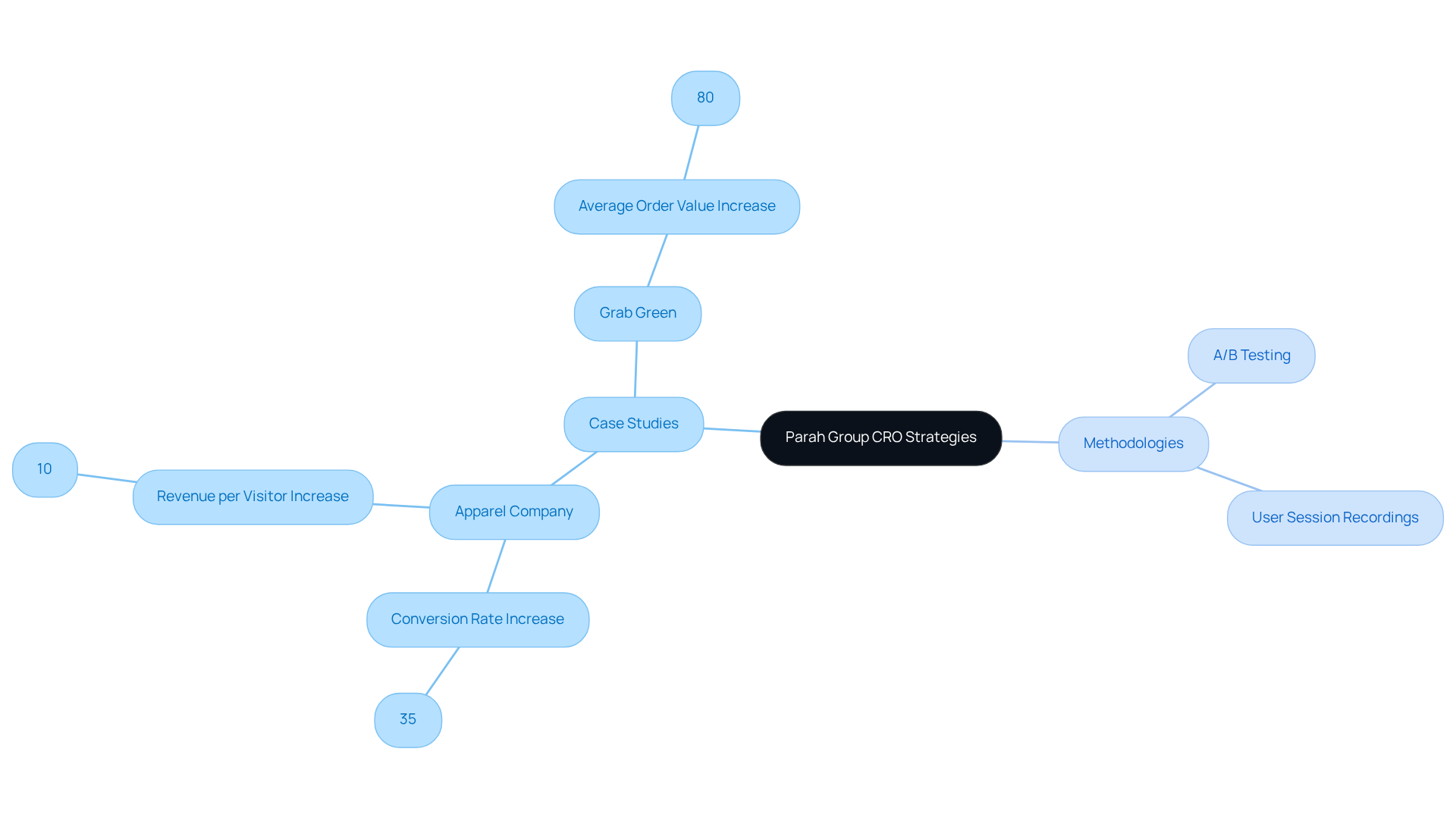
Coca-Cola: Leverage Personalization in Repetition Advertising
Coca-Cola's 'Share a Coke' campaign exemplifies the profound impact of personalization in repetition ad. By featuring individual names on bottles, Coca-Cola established a personal connection with consumers, encouraging them to share their experiences across social media platforms. This approach not only heightened visibility but also reinforced customer loyalty through consistent exposure to a repetition ad featuring personalized messages. The emotional resonance of seeing one's name on a product cultivates a deeper connection, significantly enhancing brand recognition and driving sales.
In parallel, Parah Group's case studies reveal how innovative conversion rate optimization strategies can elevate the profitability of direct-to-consumer (DTC) companies. For example, a $30 million apparel company experienced a 35% increase in conversion rates after implementing social proof and optimizing product pricing. This underscores the effectiveness of tailored strategies in enhancing customer engagement. Similarly, a $15 million cleaning product company achieved an 80% increase in average order value by testing free shipping thresholds and introducing product bundles. These cases illustrate how strategic adjustments can lead to substantial revenue growth.
Brands that prioritize personalization can anticipate significant improvements in customer engagement and loyalty, ultimately driving their success in a competitive marketplace.

Nike: Strengthen Brand Identity through Repetitive Messaging
Nike effectively employs a repetition ad strategy to reinforce its identity. The iconic slogan 'Just Do It' transcends mere tagline status; it embodies the company's ethos and is consistently showcased across various campaigns. This repetition ad not only enhances recall but also aligns with Nike's mission to inspire and motivate individuals. By embedding this message in diverse contexts, Nike ensures that its identity remains top-of-mind, fostering a strong emotional connection with its audience.
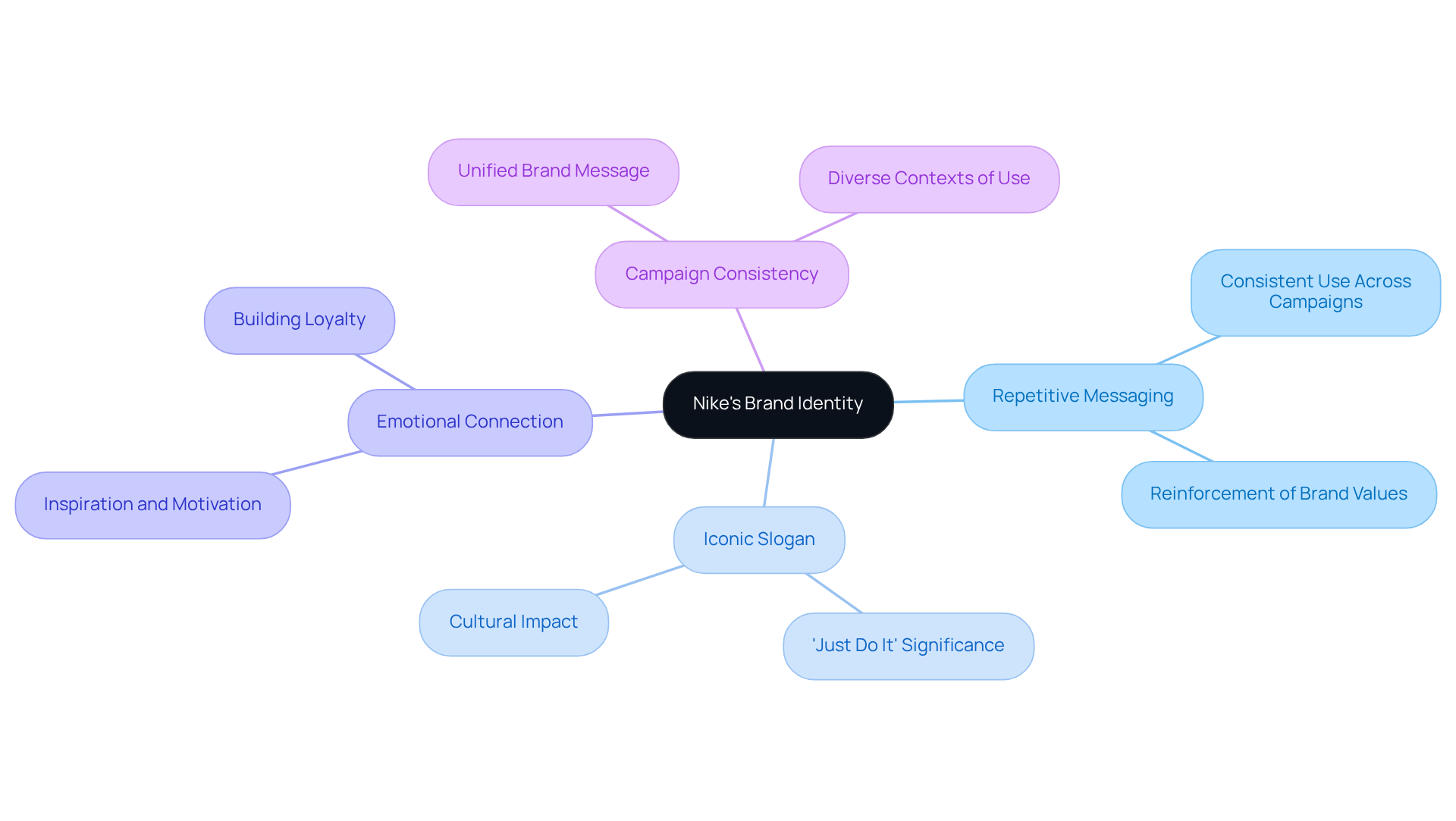
Apple: Create Anticipation with Repetitive Launch Campaigns
Apple expertly cultivates anticipation for its product launches through strategically repetitive marketing campaigns known as repetition ads. By consistently teasing features and benefits leading up to a launch, Apple not only builds excitement but also keeps consumers actively engaged. This method ensures that potential buyers are well-informed while simultaneously generating a buzz that significantly drives sales. The repetition ad in their communication reinforces the company's innovative image, making each launch a highly anticipated event. Such a strategy exemplifies how effective marketing can create a powerful connection with consumers, ultimately reinforcing Apple's position as a leader in the industry.
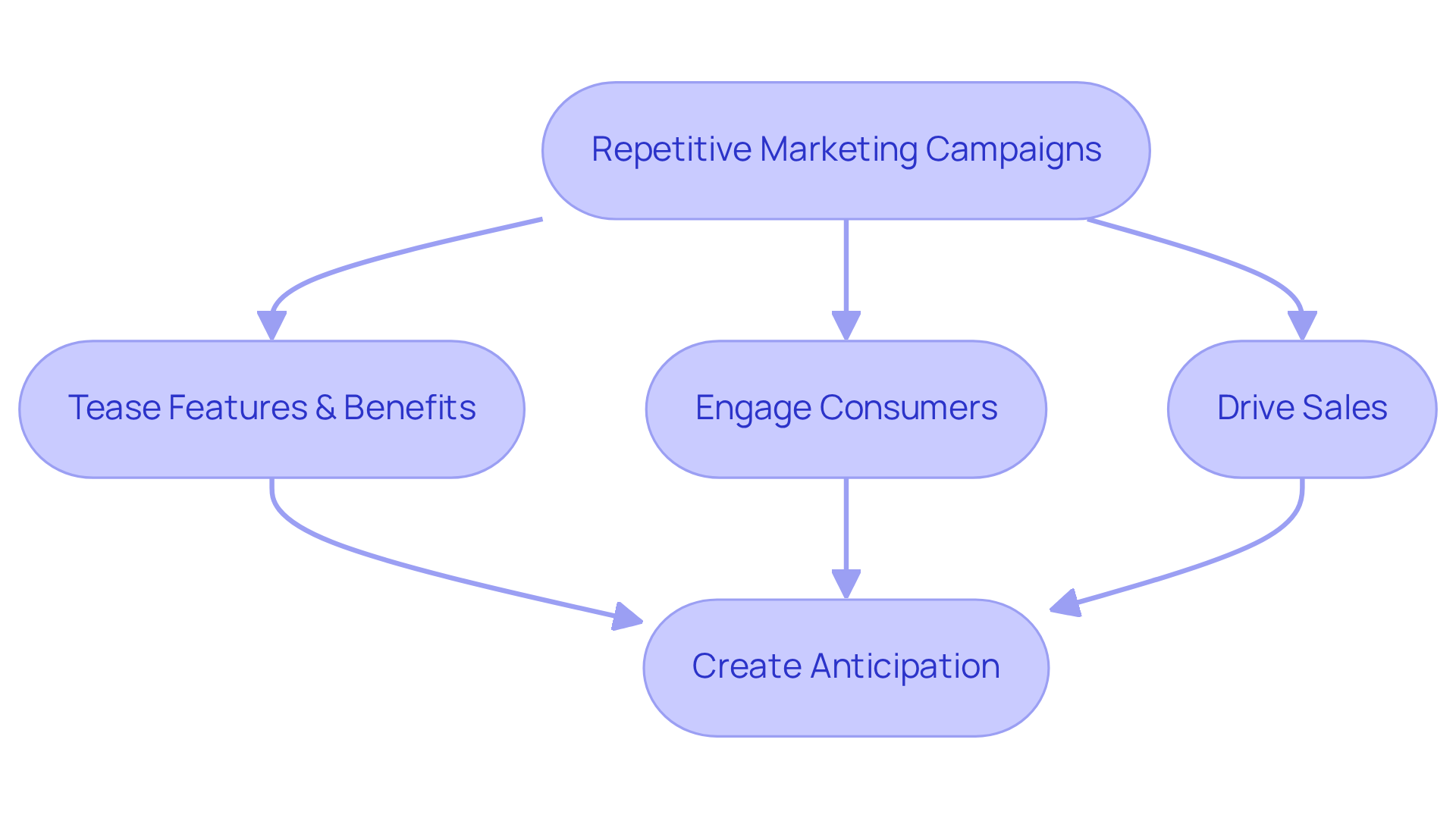
Utilize Multiple Channels for Enhanced Repetition Advertising
To maximize the effectiveness of repetition ads, companies must leverage a diverse array of channels, including social media, email, and digital ads. This multi-channel approach ensures uniform communication across platforms, significantly enhancing the likelihood of recall among customers. A campaign that simultaneously targets audiences on Instagram, Facebook, and through email effectively reinforces the message while reaching diverse audience segments.
By diversifying their channels, companies can sustain consumer interest and engagement, avoiding the pitfalls of ad fatigue that often arise from repetitive formats. Consistency in messaging not only enhances recognition but also fosters a deeper emotional connection with the audience, ultimately leading to increased conversion rates. In fact, maintaining consistency in branding can contribute up to 23% to revenue growth, underscoring the financial advantages of a cohesive advertising strategy.
Moreover, with 66% of Southeast Asian consumers disregarding repetitive advertisements presented on a single channel, it is imperative for companies to adopt a multi-channel strategy to sustain engagement. Coca-Cola's 'Share a Coke' campaign exemplifies this strategy, successfully utilizing a repetition ad across various platforms to enhance product recall and drive sales.

Ensure Consistent Messaging Across All Advertising Platforms
Consistent communication across all advertising platforms is essential for the success of repetition ad. Brands must ensure that their core message, tone, and visuals are harmonized across various channels. This alignment not only fosters trust but also strengthens identity, facilitating easier recognition and recall among consumers.
For instance, when a company launches a specific campaign on social media, it should mirror the same visuals and messaging in email marketing and website content. This cohesive identity experience is essential; entities that uphold visual consistency can observe a 19.5 percent rise in organic traffic and a 13.5 percent enhancement in conversion rates. Moreover, a refresh of the identity can result in a 39.7 percent rise in search visibility, emphasizing the significance of a unified visual identity.
Strong visual branding not only strengthens initial impressions but also encourages ongoing consumer relationships. By constructing a unified story, companies improve their visibility and cultivate stronger emotional ties with their audience, ultimately resulting in heightened loyalty and trust.
To effectively implement these strategies, brands should consider creating a comprehensive branding guide that outlines their visual and messaging standards.

Balance Ad Frequency to Avoid Consumer Fatigue
Balancing ad frequency is crucial to prevent audience fatigue from repetition ads. Brands must diligently track engagement metrics to ascertain the optimal number of times a repetition ad should be displayed to their audience. Research indicates that a repetition ad frequency of 3-5 impressions per week is often ideal for sustaining interest without inducing annoyance.
By strategically rotating advertisement creatives and varying communication styles, companies can keep their campaigns fresh and engaging, thereby ensuring that individuals remain receptive to their messages.
![]()
Target Audience Segments for Effective Repetition Advertising
Effective repetition ad necessitates a strategic focus on specific audience segments. By thoroughly understanding the demographics, interests, and behaviors of diverse consumer groups, companies can tailor their communications to forge deeper connections.
For instance, a fitness brand may develop distinct advertisements targeting casual gym-goers in contrast to serious athletes, ensuring that the messaging resonates with each group's unique motivations. This targeted approach significantly amplifies the effectiveness of repetition ad promotions, ultimately resulting in elevated engagement and recall rates.
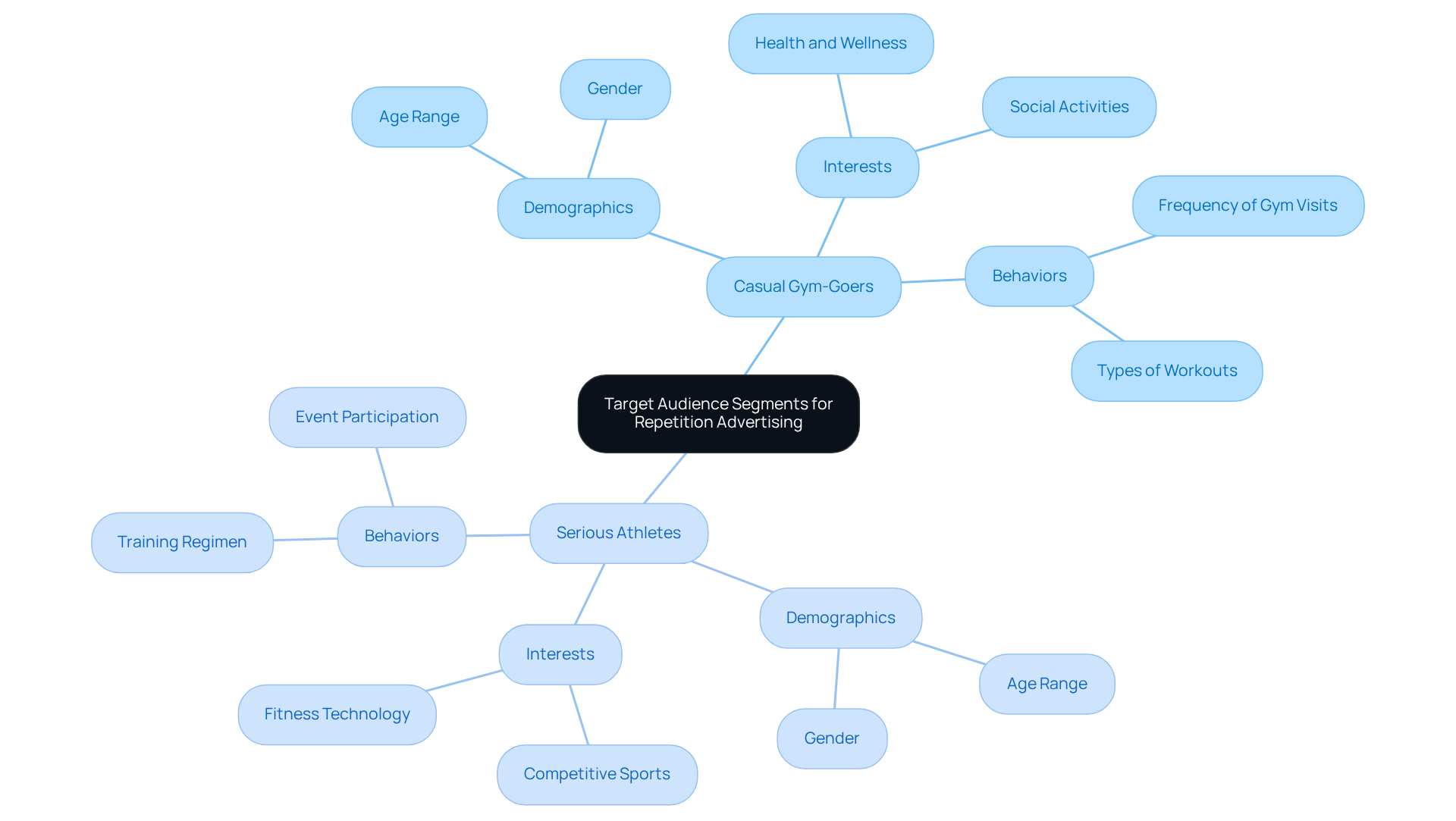
Incorporate Emotional Triggers to Enhance Repetition Impact
Incorporating emotional triggers into repetition ads significantly enhances its effectiveness. Advertisements that evoke emotions such as joy, nostalgia, or excitement connect more profoundly with audiences, rendering them more memorable. For instance, companies that share heartfelt stories in their advertisements can forge strong emotional connections, prompting consumers to engage on a deeper level.
Consistently employing a repetition ad that utilizes emotional appeals not only boosts recall but also cultivates loyalty among audiences. Research indicates that emotional marketing strategies yield a success rate of 31%, and 70% of companies report enhanced customer engagement when utilizing emotionally-driven loyalty programs.
Furthermore, companies that leverage nostalgia in their messaging can tap into powerful memories, enhancing recall and fostering trust. Notable examples include Oreo's 'Stay Playful' campaign, which effectively utilized family-oriented themes to create emotional resonance, resulting in over 80 million impressions and an 18% increase in engagement rates during its execution.
By prioritizing emotional storytelling, companies can create lasting impressions that drive engagement and loyalty. DTC product owners should consider incorporating emotional stories into their marketing strategies to engage with their audience on a deeper level.
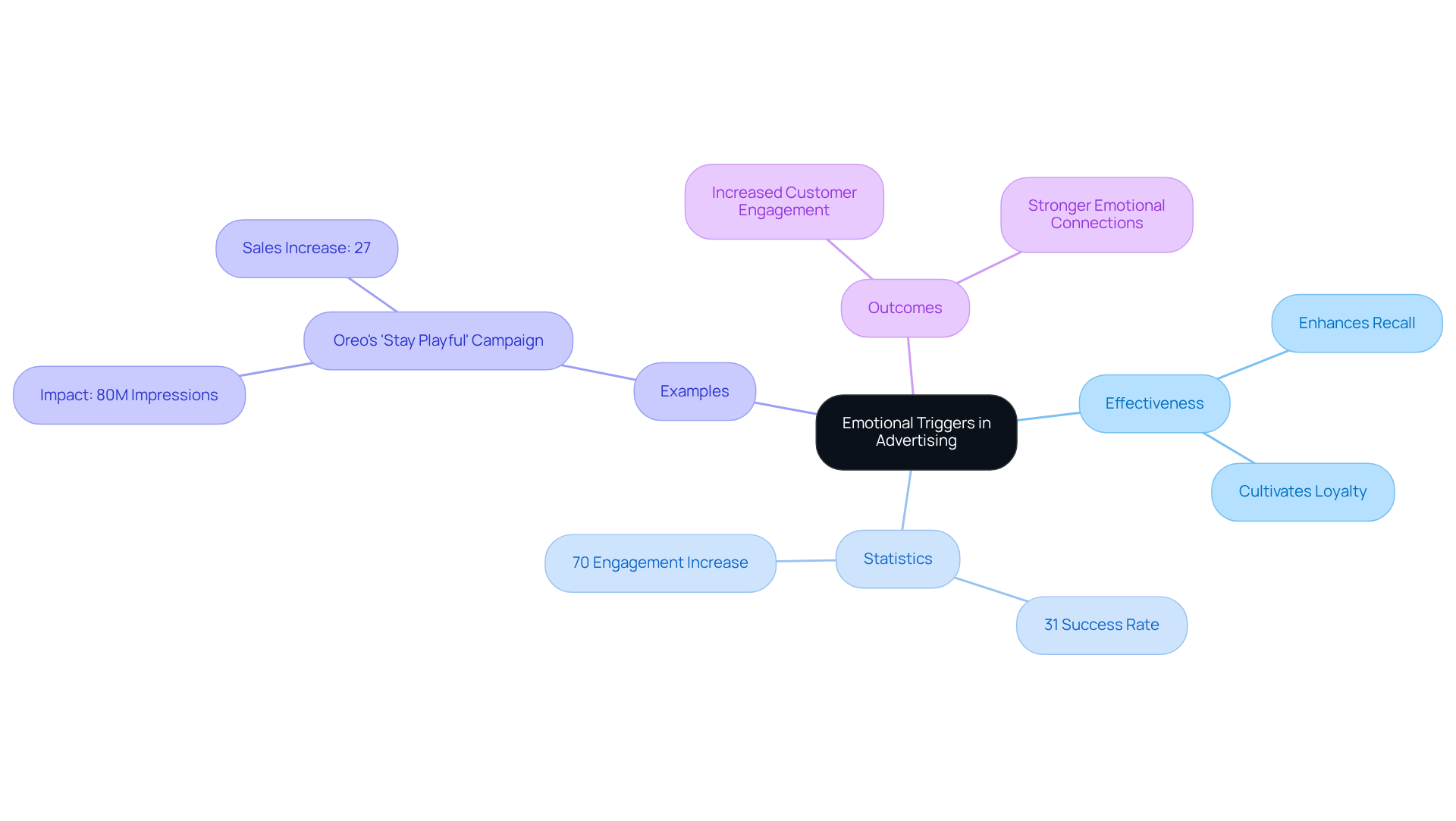
Manage the Wear-Out Effect in Repetition Advertising
To combat the wear-out effect in repetition ads, companies must routinely assess their ad performance and implement creative refresh strategies. Regular reviews of creative performance every 4-6 weeks are essential to identify when an ad begins to lose its impact due to overexposure. Tactics such as:
- Rotating ad formats
- Introducing fresh visuals
- Modifying messaging
can significantly rejuvenate a campaign. For instance, refreshing creative at the start of each campaign phase and aligning updates with seasonal events or product launches enhances relevance and maintains audience interest. As Jennifer Fritz asserts, "Refreshing your creative assets helps keep your audience engaged with your message, and helps maintain optimal response rates." By proactively managing ad fatigue, brands not only sustain consumer engagement but also maximize the effectiveness of their repetition ad efforts, ultimately driving better results and reinforcing brand recall.
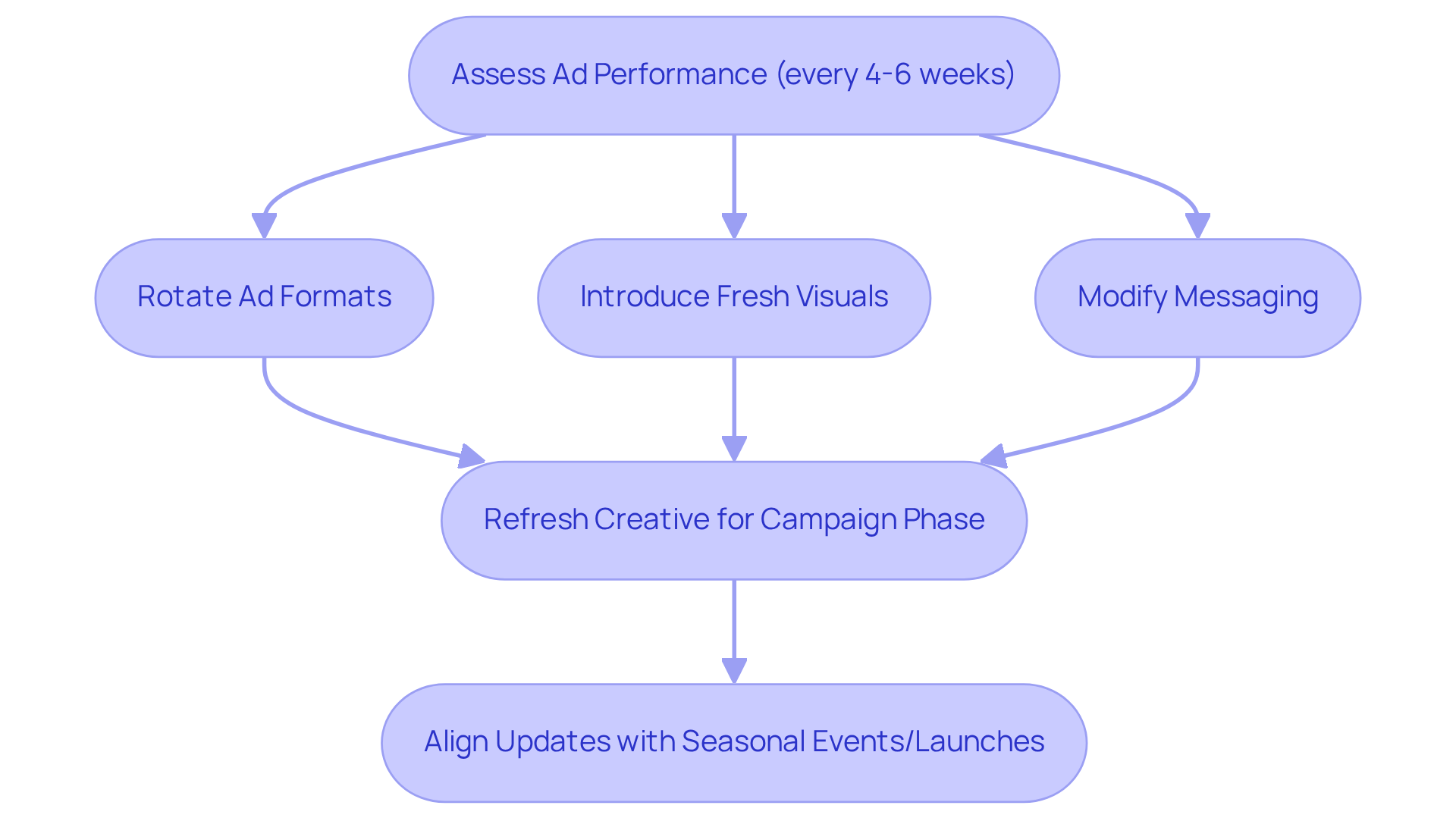
Conclusion
Incorporating effective repetition advertising strategies is essential for brands aiming to enhance recall and drive engagement. By leveraging techniques such as data-driven approaches, personalization, and emotional storytelling, companies can create impactful campaigns that resonate with their target audiences. The emphasis on consistent messaging across multiple channels further solidifies brand identity, ensuring that consumers remain connected and engaged.
Throughout the article, key strategies have been explored, including:
- The importance of balancing ad frequency to avoid consumer fatigue
- The power of emotional triggers in advertising
- The necessity of targeting specific audience segments
Case studies from industry leaders like Parah Group, Coca-Cola, Nike, and Apple illustrate how these methods can lead to substantial increases in conversion rates and average order values, showcasing the tangible benefits of well-executed repetition ads.
Ultimately, the significance of repetition in advertising cannot be overstated. Brands that prioritize these strategies not only enhance their visibility but also cultivate deeper emotional connections with their audiences. As the advertising landscape evolves, adopting a comprehensive approach that combines these insights will be crucial for driving brand recall and achieving long-term success in a competitive marketplace. Embracing these strategies today can set the foundation for more effective and memorable advertising campaigns in the future.
Frequently Asked Questions
What is the main focus of Parah Group's advertising strategies?
Parah Group focuses on optimizing repetition advertising through data-driven conversion rate optimization (CRO) strategies that enhance the effectiveness of ad promotions by analyzing user behavior and engagement metrics.
How does Parah Group determine the effectiveness of repetition ads?
They determine effectiveness by pinpointing the optimal frequency and messaging that resonate with target audiences, which maximizes product recall and ensures efficient use of advertising expenditures.
Can you provide an example of a company that benefited from Parah Group's strategies?
Yes, a $30 million apparel company saw a 35% increase in conversion rates and a 10% rise in revenue per visitor after implementing Parah Group's strategies, which included optimizing product pricing and gamifying the shopping experience.
What specific results did Grab Green achieve using Parah Group's strategies?
Grab Green, a $15 million cleaning product company, achieved an 80% increase in average order value (AOV) by testing free shipping thresholds and introducing product bundles.
What methodologies does Parah Group use to improve ad performance?
Parah Group utilizes methodologies such as A/B testing and user session recordings to continuously fine-tune ad performance through the implementation of repetition ads.
How did Coca-Cola use personalization in its advertising?
Coca-Cola's 'Share a Coke' campaign featured individual names on bottles, creating a personal connection with consumers and encouraging them to share their experiences on social media, thereby enhancing brand loyalty and visibility.
What impact did Coca-Cola's personalization strategy have on customer engagement?
The personalization strategy cultivated a deeper emotional connection with consumers, significantly enhancing brand recognition and driving sales.
What are some results from Parah Group's case studies on DTC companies?
Parah Group's case studies revealed that a $30 million apparel company increased conversion rates by 35% through social proof and optimized pricing, while a $15 million cleaning product company increased AOV by 80% by testing free shipping thresholds and introducing product bundles.
What is Nike's approach to repetition advertising?
Nike employs a repetition ad strategy by consistently showcasing its iconic slogan 'Just Do It,' which reinforces its brand identity and fosters a strong emotional connection with its audience.
FAQs











